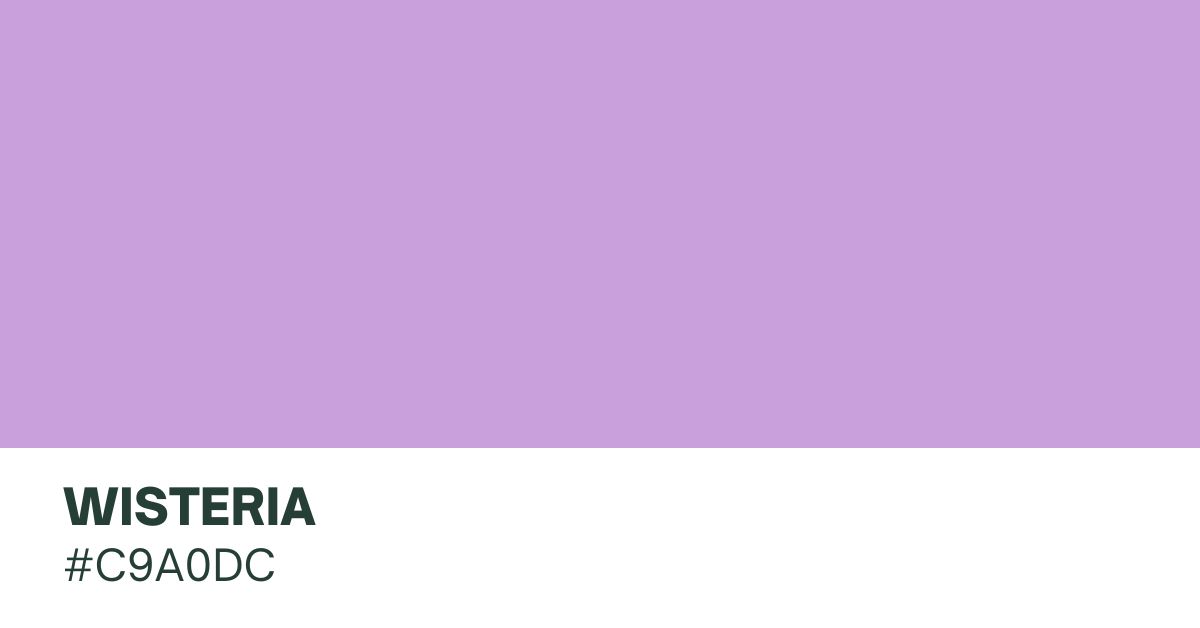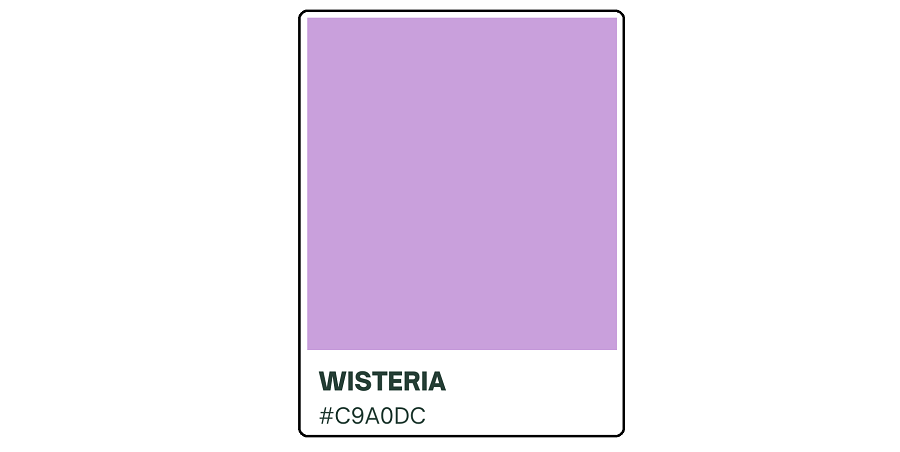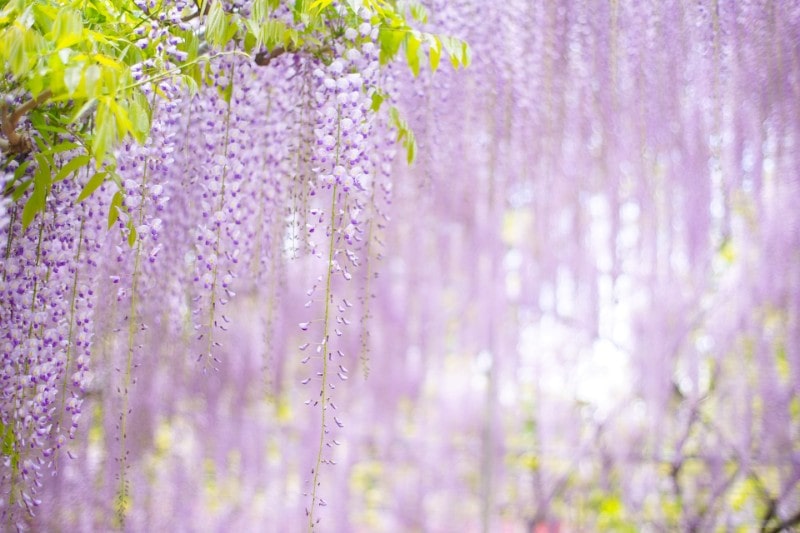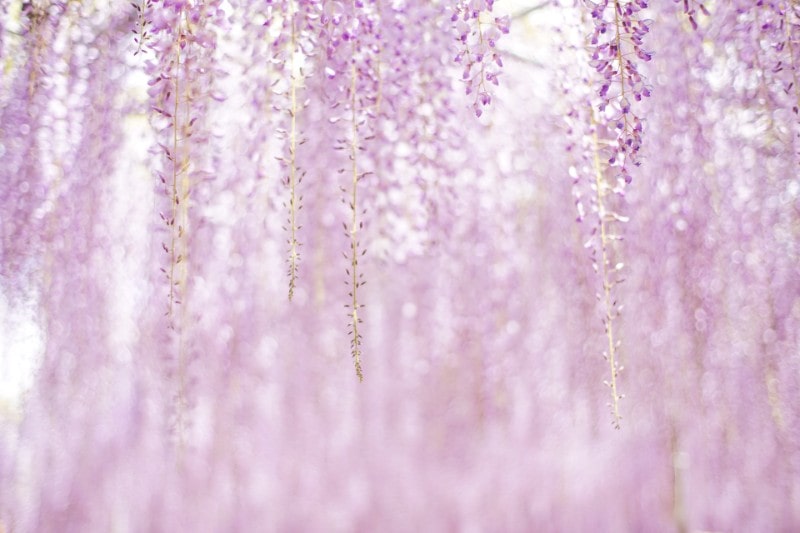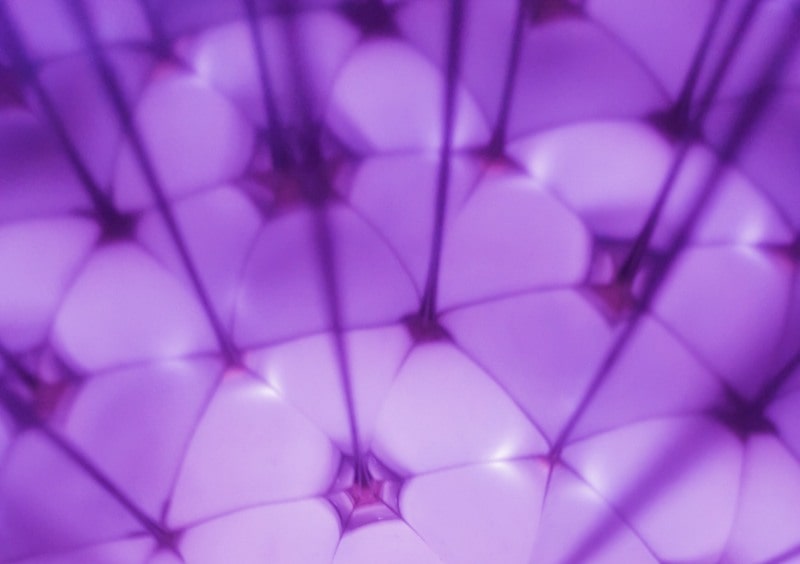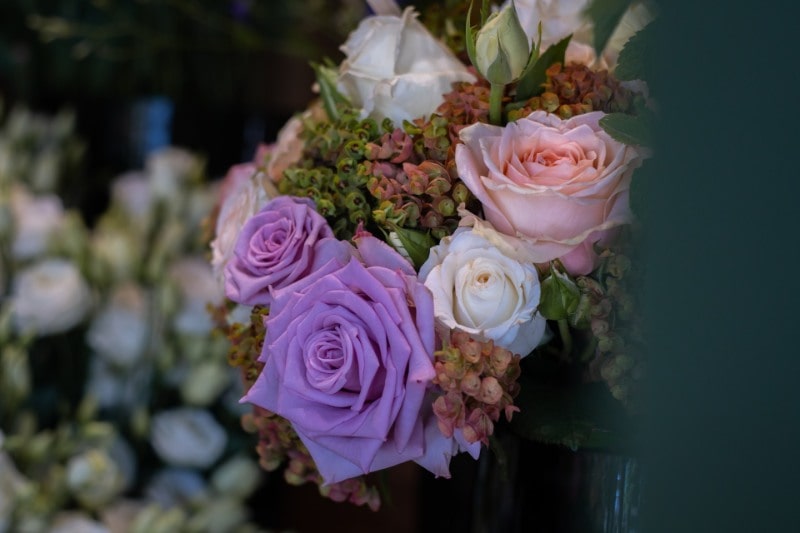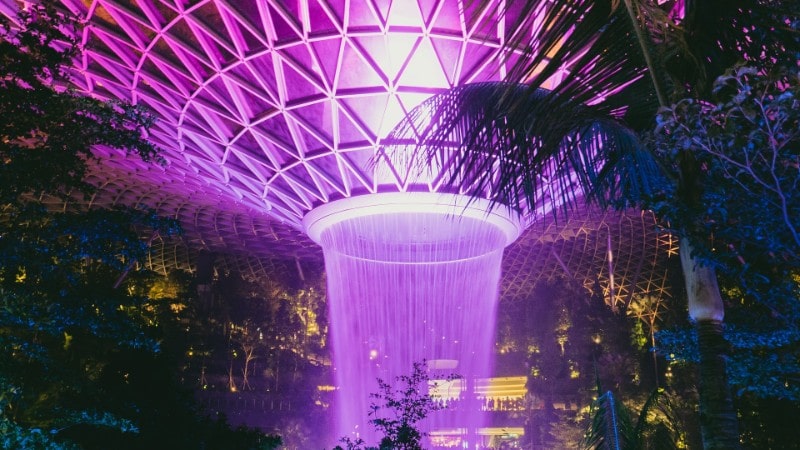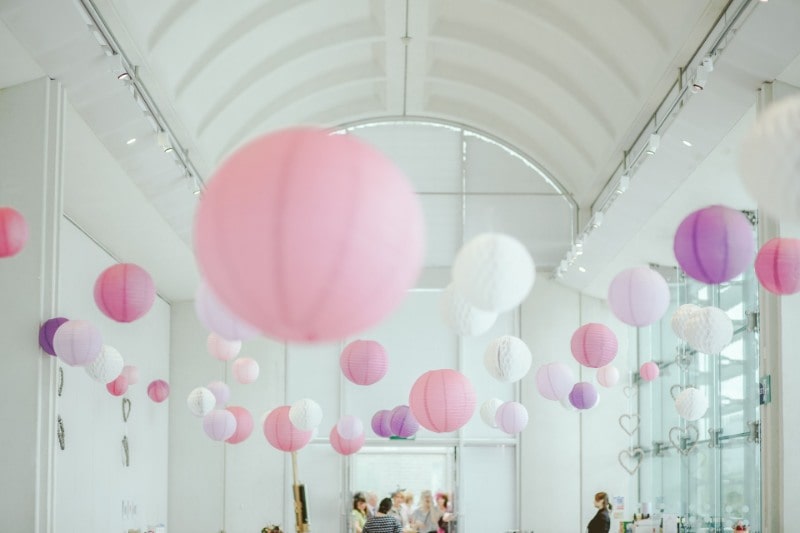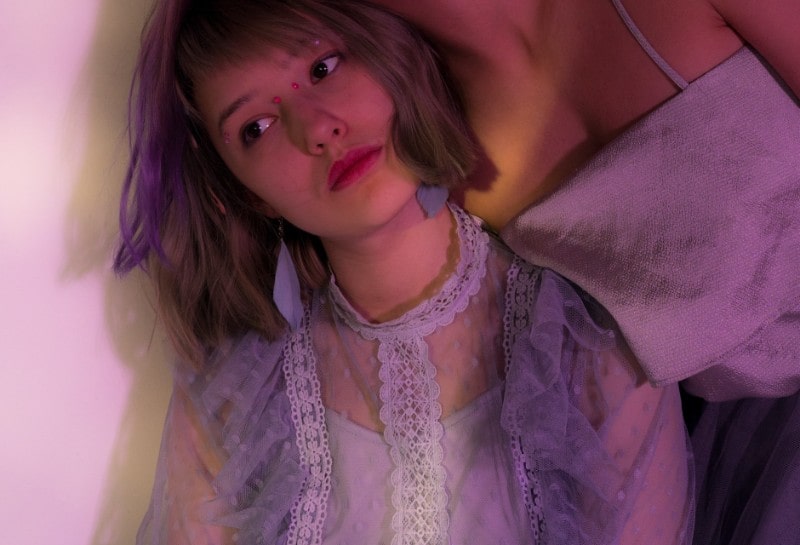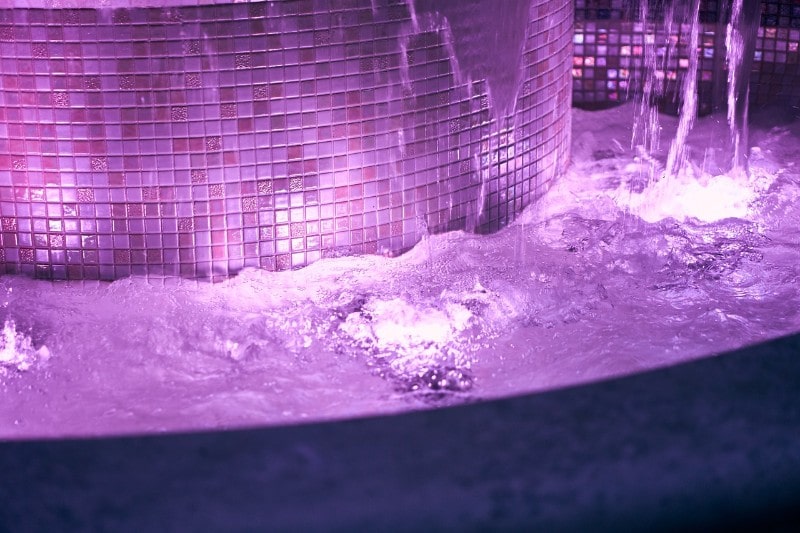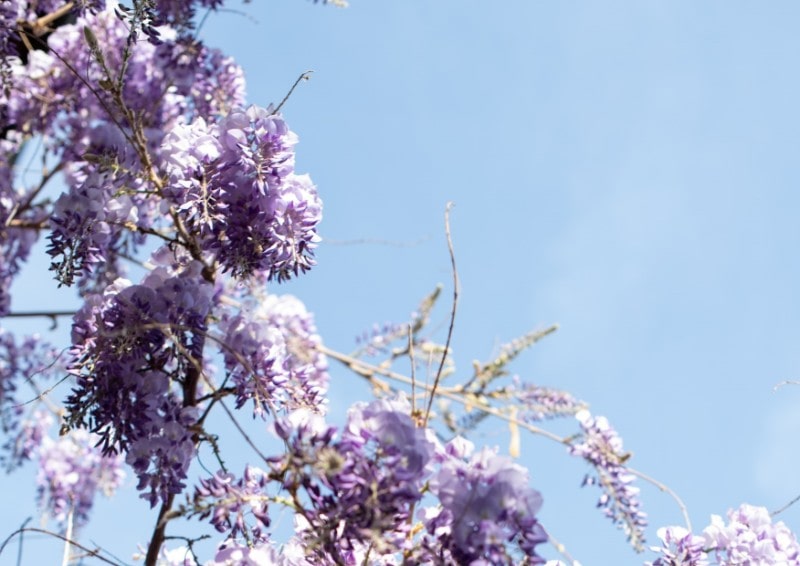Last Updated on September 28, 2023
You’re probably familiar with the gentle wisteria flower: known for its graceful clusters of blossoms that cascade in various shades of purples and lavenders. But more than beautiful blooms, wisteria is also a unique and enchanting hue.
Wisteria exudes a sense of calm and tranquility, making it a popular choice for creating peaceful environments. Its subtle elegance lends itself well to both modern and classic design aesthetics. Whether used as a dominant color or as an accent, wisteria can evoke feelings of nostalgia and romance.
In this article, we shall explore everything there is to know about the wisteria color. You’ll discover how understanding the psychology of wisteria is key to unveiling its effects on human emotions and behaviors, highlighting the hue’s potential to induce calmness, creativity, and introspection.
Introduction to Wisteria Color
It’s essentially a soft pastel shade that results from combining shades of blue and red. The exact combination of these primary colors, along with varying levels of saturation and brightness, gives wisteria its distinctive and captivating appearance. The hex code of wisteria is #C9A0DC.
The addition of blue undertones contributes to its calming and soothing quality, reminiscent of a clear sky at dusk. The delicate balance of red tones infuses the color with a hint of warmth, making it inviting and gentle. It leans towards the cooler end of the color spectrum.
Combining Wisteria with Other Hues
Using wisteria alongside complementary colors is an excellent way to create a captivating visual experience. The resultant color combination can greatly impact the overall appeal of your creations.
You can pair wisteria with pastels like soft pinks or light blues to achieve a serene atmosphere. These combinations are ideal for use in bedrooms or living rooms where the goal is to create a relaxing environment.
On the other hand, using wisteria alongside metallics like silver or gold can add a touch of luxury and elegance to a space. The shimmering effect of metallics complements the softness of wisteria, creating a glamorous look. This combination is commonly seen in dining rooms or formal events, where opulence is desired.
For a more grounded feel, you might consider pairing wisteria with earth tones like taupe or olive green. Earthy colors blend well with wisteria to create a sense of coziness, making a room feel inviting and comfortable. Such combinations are perfect for use in living rooms or kitchens.
Lastly, combining wisteria with jewel tones like deep purples or rich blues is a great way to achieve a bold, vibrant look. The contrast between its softness and the intensity of jewel tones will add more drama and excitement to a space. The resulting palette works best if used on accent pieces or statement walls.
The History of Wisteria
The origins of wisteria can be traced back to ancient civilizations, where the color stood out as a symbol of spirituality and transformation. This shade of purple gained smashing popularity for its delicate and breathtaking hues.
It’s worth noting that wisteria has existed in the natural environment from the beginning of time. In nature, the color is visible in flowers like lavender and lilac, as well as in certain fruits and vegetables.
The history is also intertwined with its cultural symbolism. And as you shall find, the color’s cultural significance varies across different societies and time periods. In ancient Egypt, for example, purple was associated with royalty and power.
In ancient Greece, the color symbolized mourning and grief. And during the Renaissance, wisteria became popular among European nobility as a sign of wealth and luxury.
Recently however, wisteria has particularly become popular in fashion and design trends. The color’s calming properties have made it a popular choice for bedrooms and meditation spaces.
The Symbolism and Cultural Significance of Wisteria
This delicate and enchanting hue carries symbolic meanings in different cultures around the world.
For instance, Japanese culture associates wisteria with love, sensitivity, and the beauty of nature. The color often appears in traditional kimono designs, paintings, and even in the famous wisteria festivals that take place during springtime.
Wisteria is part of religious rituals in different cultures too.
In Buddhism, for instance, wisteria symbolizes humility and the ability to withstand adversity. In Hinduism, the color represents the divine feminine energy. It’s often associated with the goddess of wealth and prosperity, Lakshmi.
Wisteria also holds a place in folklore and mythology. According to Greek mythology, wisteria vines (and by extension their color) served as a bridge that allowed the gods to descend from Mount Olympus to Earth.
In Chinese folklore, wisteria is associated with immortality and is often depicted in paintings and poetry.
The symbolism and cultural significance of wisteria are visibly vast. From its traditional applications in religious rituals to its appearance in mythology, wisteria has truly earned a name for itself as one of the most intriguing colors.
The Psychological Effects of Wisteria
Like any other shade, wisteria wields a unique psychological influence, primarily recognized for its talent in cultivating tranquility, crafting spaces conducive to relaxation and introspection. Its significance, however, transcends cultural boundaries.
In Western societies, it embodies femininity, grace, and elegance, while in Eastern cultures, it symbolizes spirituality and enlightenment.
Its impact on mood remains consistently positive. The gentle, soothing nature of wisteria evokes peace and serenity, offering respite from anxiety and depression. This subtlety also makes it an ideal choice for calming spaces like bedrooms or meditation rooms. Cultural interpretations, especially in Japan where wisteria signifies renewal, enhance its psychological effects, infusing depth and meaning.
Additionally, wisteria holds a place in color therapy, promoting balance and inner peace. To encapsulate, wisteria’s inner effects are its ability to induce tranquility, reduce stress, and create a serene atmosphere. Whether through cultural lenses or color therapy, this subtle hue profoundly impacts our psyche.
Wisteria in Art and Design
Many artists and designers use the color to induce a sense of serene beauty. This chic shade of purple has found its place in various forms of artistic expression, including abstract art, graphic design, floral arrangements, interior design, and even wedding themes.
a) Wisteria in Abstract Art
In abstract art, wisteria is often used to convey a dreamy and ethereal atmosphere. This soft and delicate shade of purple can create a sense of introspection, allowing viewers to immerse themselves fully in any artwork featuring the color. Abstract artists can pair wisteria with other pastel shades to further enhance its soothing effect.
b) Wisteria in Graphic Design
Wisteria is commonly used in graphic design to add a touch of sophistication to graphics. Its subtle undertones can bring a sense of refinement to logos, branding materials, and website designs.
This color is particularly popular in industries whose products are intended to convey a sense of luxury and exclusivity, such as beauty, fashion, and lifestyle.
c) Wisteria in Floral Arrangements
When it comes to floral arrangements, wisteria blossoms can add a unique sense of enchantment to their surroundings. These delicate flowers produce cascading clusters that can create a romantic and whimsical ambiance.
Wisteria is often incorporated into wedding bouquets, centerpieces, and decorations, adding a touch of grace and femininity to the overall theme.
d) Wisteria in Interior Design
Most shades of purple are effective at creating a peaceful atmosphere, and wisteria is no exception. Whether it’s painted on walls, incorporated into furniture, or used as accents, this color can bring a sense of tranquility to any space.
Wisteria’s muted tones blend harmoniously with neutral color palettes, creating a balanced environment.
e) Wisteria as a Wedding Theme
Wisteria is a popular color for wedding themes too. Its association with romance and elegance makes it ideal for achieving a dreamy and charming atmosphere.
From bridesmaid dresses to floral arrangements and table settings, wisteria can add a unique touch of grace to the overall wedding aesthetic.
f) Wisteria in Fashion
This soft, muted shade of purple is visible in accessories like handbags, scarves, and jewelry, where it can add a touch of elegance to any outfit. The color is also commonly used in makeup products, particularly in eyeshadows and lipsticks, to create a subtle and romantic look.
When used for main outfits as opposed to accessories, the wisteria color is especially popular for evening wear. That’s due to its ability to exude a sense of glamor, romance, and seduction. Dresses and gowns in this shade are often seen on red carpets and at formal events, where they create a striking and memorable look.
Footwear is another area where the wisteria has made its mark in the fashion industry. From delicate ballet flats to stylish heels, this color can add a feminine and graceful touch to any pair of shoes.
g) Wisteria in Home Décor
Much like the fashion industry, wisteria home décor trends have seen a rise in popularity in recent years, with many interior designers incorporating this hue into their palettes.
Wisteria color schemes used for interior design often include complementary colors like white, gray, and silver. These colors work synergistically with wisteria to produce a harmonious aesthetic.
How to Incorporate Wisteria into Your Life
The beauty industry is a canvas where wisteria gracefully unfolds its allure. Its soft and understated tones have made it a favored selection for nail polishes, eyeshadows, and lipsticks. With the potential to infuse an air of enchantment into any appearance, wisteria-hued beauty products wield the power to conjure magic.
Beyond cosmetics, the hue has also found its place in weddings. A prominent choice for both primary and accent roles, this color graces floral arrangements, bridesmaid dresses, and wedding invitations. Its tender pink tone embodies love, romance, and fresh beginnings. As couples embark on their shared journey, wisteria stands as a poignant representation of their union.
The versatility of this shade extends even to fashion accessories, including scarves, handbags, and jewelry. Infusing a dash of wisteria into an ensemble can swiftly elevate a piece, offering a captivating touch. Moreover, wisteria has etched its presence in the digital landscape. Its soothing demeanor makes it a favored choice for website backgrounds, logos, and graphic designs.
Final Word
Timeless, diverse, and symbolic, wisteria is more than just another shade of purple. It’s fairly abundant in nature – as evidenced by the delicate blossoms of the wisteria tree. The color’s presence evokes a sense of tranquility and beauty, reminding us of the wonders of the natural world.

